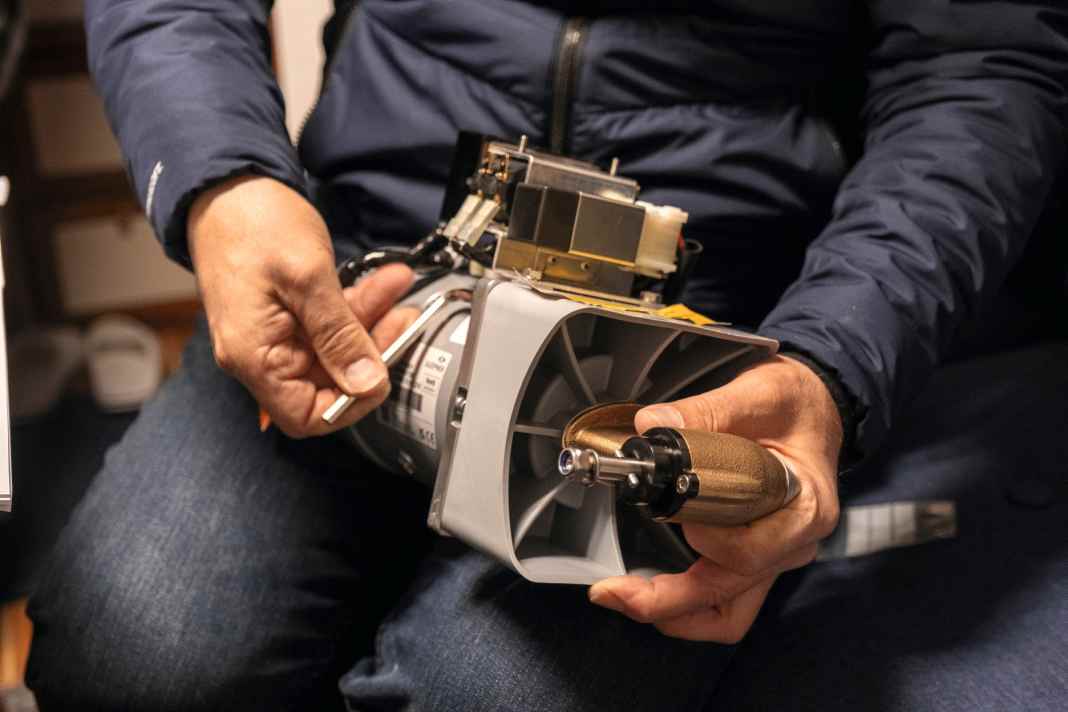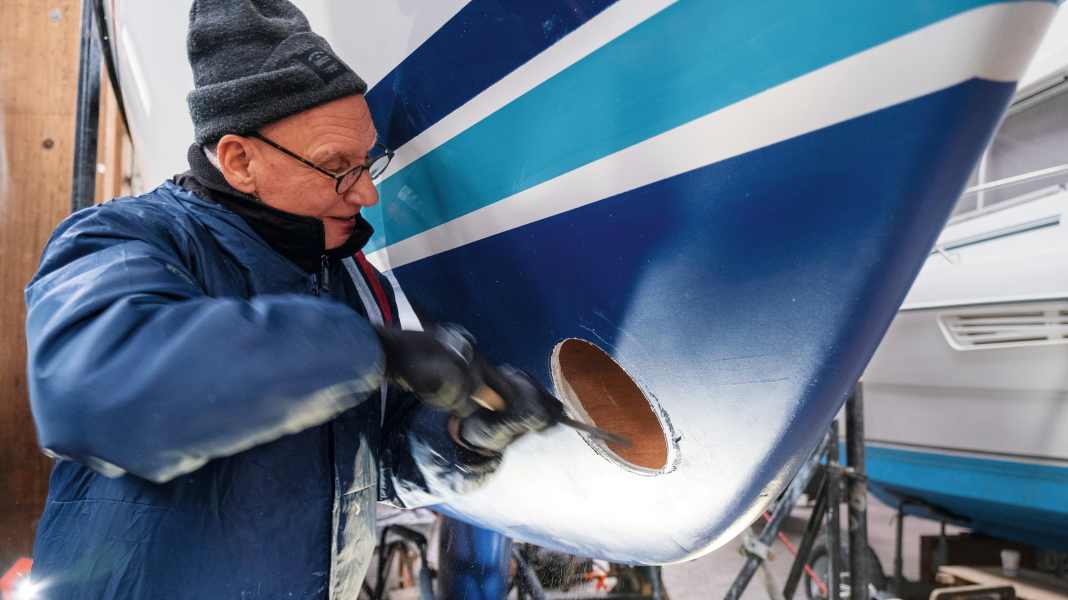
Narrow pit lanes and large yachts are an unfavourable combination. However, manoeuvring is sometimes difficult even with compact boats, for example because you are sailing single-handed and there is simply no one to help you take or operate the fore line or spring in time. A bow thruster can significantly reduce the pulse rate in such situations, as the boat stays on track or turns into the box at the touch of a button, regardless of the wind direction or strength. This has consequences for the whole trip; often the biggest challenge is casting off and mooring. If you don't have to worry so much about this, you will set off more often, gain more practice and react more confidently - even without pressing the button.
Bow thruster: Effect, manoeuvres, system comparison...
But even if a bow thruster is on the wish list of many owners, the reservations about retrofitting are at least as great, because it is expensive fun. Even for our Mermaid 290, with which we document an installation here as an example, the components cost around 3,600 euros. Then there are the installation costs. A shipyard would easily charge 1,500 to 2,000 euros for this, especially if both GRP and electrical work is commissioned.
Tricks for installing the bow thruster
The systems can often be ordered as an installation kit. This makes it easy to assemble the necessary parts. The biggest hurdle, however, is sawing the hole in the hull: Not only does it require effort to position the saw below the waterline; the opening must also be in the right place and have an elliptical cross-section.
Professionals use a tunnelling cutter for this, which automatically creates the appropriate cut-out. Some of these tools can be borrowed when buying a bow thruster, but it can also be done without special equipment. The trick is to drill a thin pilot hole through which a steel rod almost two metres long is inserted.
The rod can be used to check the position of the tunnel and the holes can be reworked. The rod is then used as an axis to draw the ellipse on the fuselage. This can be done with a simple U-shaped wire that is half the diameter of the tunnel. It is fixed to the axle with one leg and serves as a compass, whereby the axle is moved in the fuselage so that the second leg scrapes over the side wall. The whole thing is a bit wobbly, which is why we opted for a much more solid template made of KG tube. As we were installing a 140 mm tunnel, we could simply use a 160 mm tube for marking and saw on the inside of the line.
More about the bow thruster:
You should be able to laminate
Once the hole in the hull has been made, there is laminating work to be done, on which the buoyancy of the yacht depends; therefore, one should be familiar with the basic techniques and follow the usually detailed installation instructions for the bow thruster.
The situation is similar with the necessary electrics. The bow thruster for our 29-foot boat already has a rated output of 2.4 kilowatts. As it is operated with twelve volts, currents of around 200 amps flow. This leaves no room for improvisation when it comes to cabling, fuses and switches. An inadequate installation with a large voltage drop not only reduces the performance of the bow thruster, but also harbours an enormous fire risk at these currents. So you should also know what you are doing here. At least in the case of the Sidepower propeller we chose, the most important characteristics such as cable cross-sections, fuse protection and power requirements for the battery are noted in the installation instructions.
If you want a particularly simple solution, you can also order a complete switching unit. This not only includes a high-current main switch that can be controlled via the control panel, but also the necessary fuse holder. However, at around 450 euros, this solution is significantly more expensive than the individual components we use.
The right bow thruster model
When selecting the right model, manufacturers usually specify the ship types and hull lengths. However, you should not orientate yourself to the upper length limit, as the bow thruster should relieve the crew in strong crosswinds and have sufficient reserves. We have therefore chosen a comparatively powerful model with a nominal thrust of 62 kilograms.
The effectiveness of the bow thruster depends on the power and the installation position. The further forward it is installed, the longer the lever arm to the axis of rotation of the boat and the greater the resulting torque. Here is an example: on a ten-metre yacht, a bow thruster with a thrust of 60 kilograms is installed three metres in front of the axis of rotation. This results in a torque of around 1,800 Newton metres (Nm). If the system were installed one metre further forward, the extended lever would generate 600 Newton metres more torque. A system with 45 kilos of thrust would therefore be sufficient for the same effect. The lower power requirement sometimes makes up for the price difference between tunnel and extendable systems.

The tunnel position is determined by the space available below deck and the shape of the hull. Above all, there must be enough water above the pipe. If the system is positioned too close to the surface, it can suck in air, causing the thrust to collapse almost completely. There should therefore be at least one tunnel diameter of water above the pipe. On the underside, a distance of a quarter of the diameter to the end of the fuselage is recommended.
The bow thruster installation step by step
Measure and mark
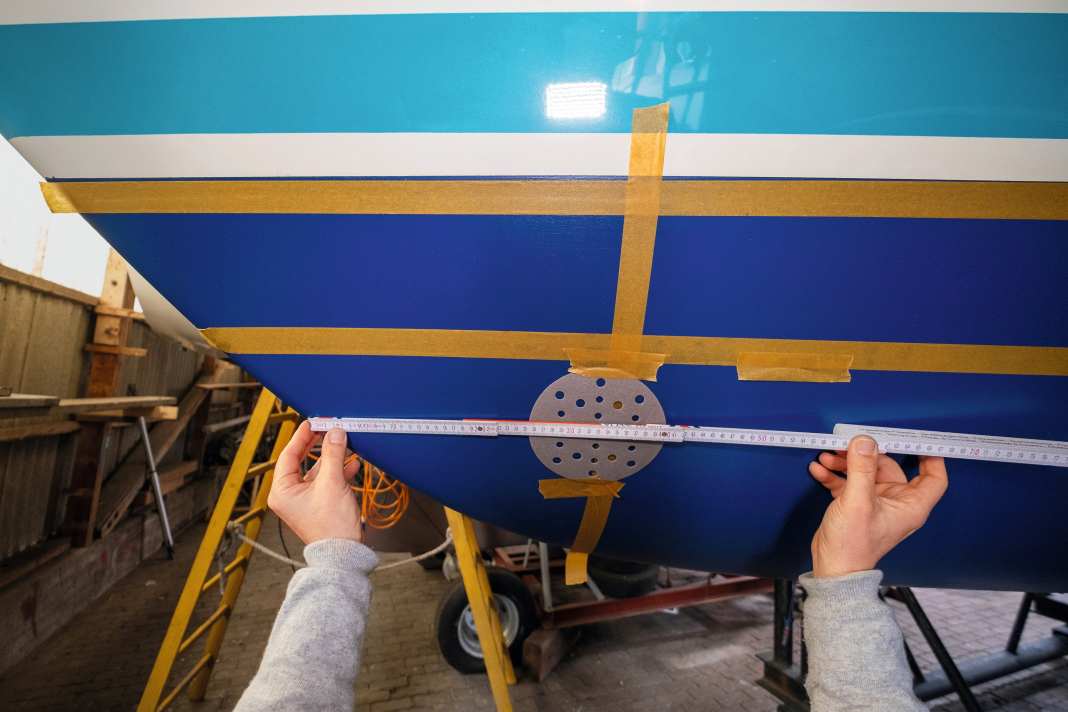





Building a template from a drainpipe
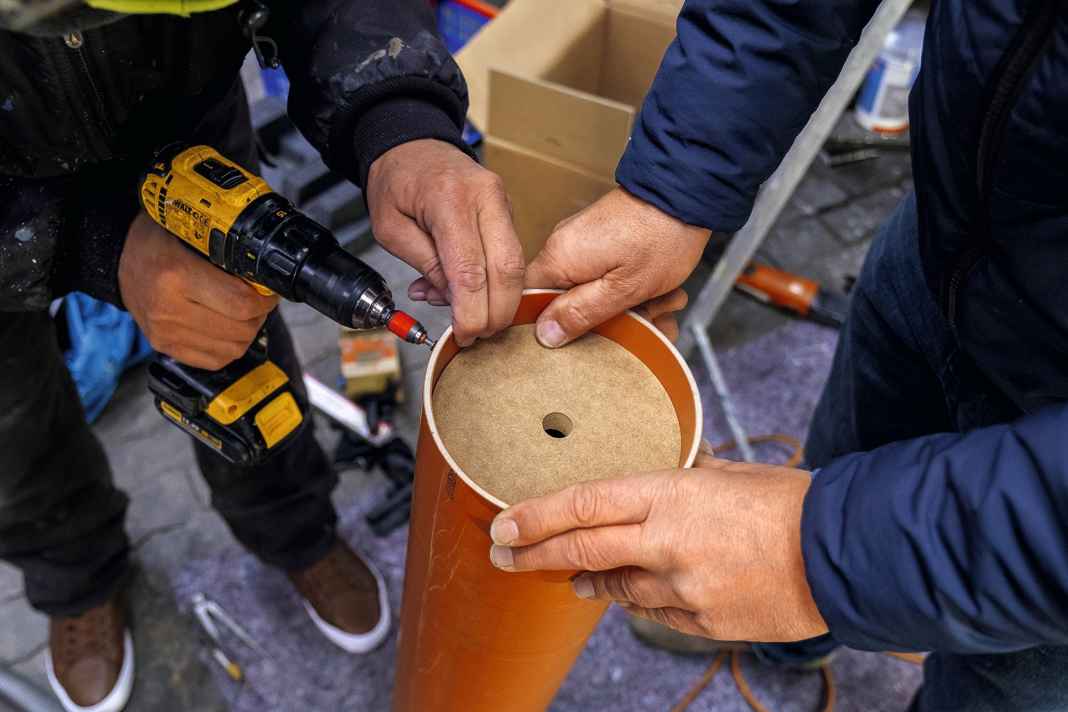





Glue and laminate the tunnel
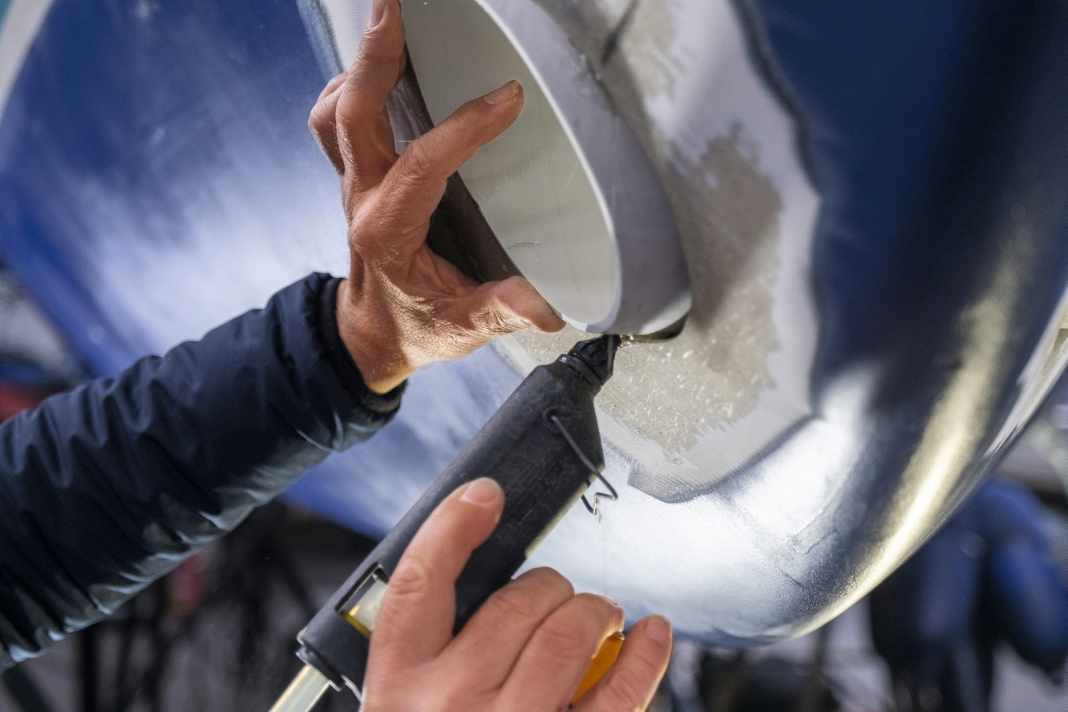





Laminate inside
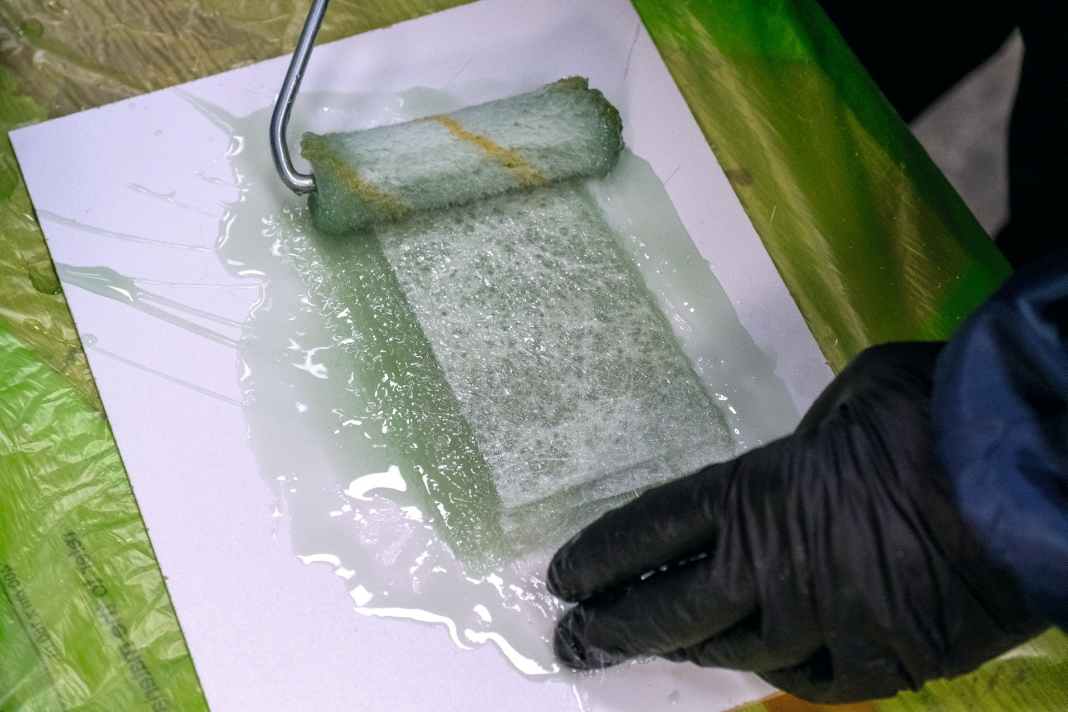





Installing and wiring the motor
